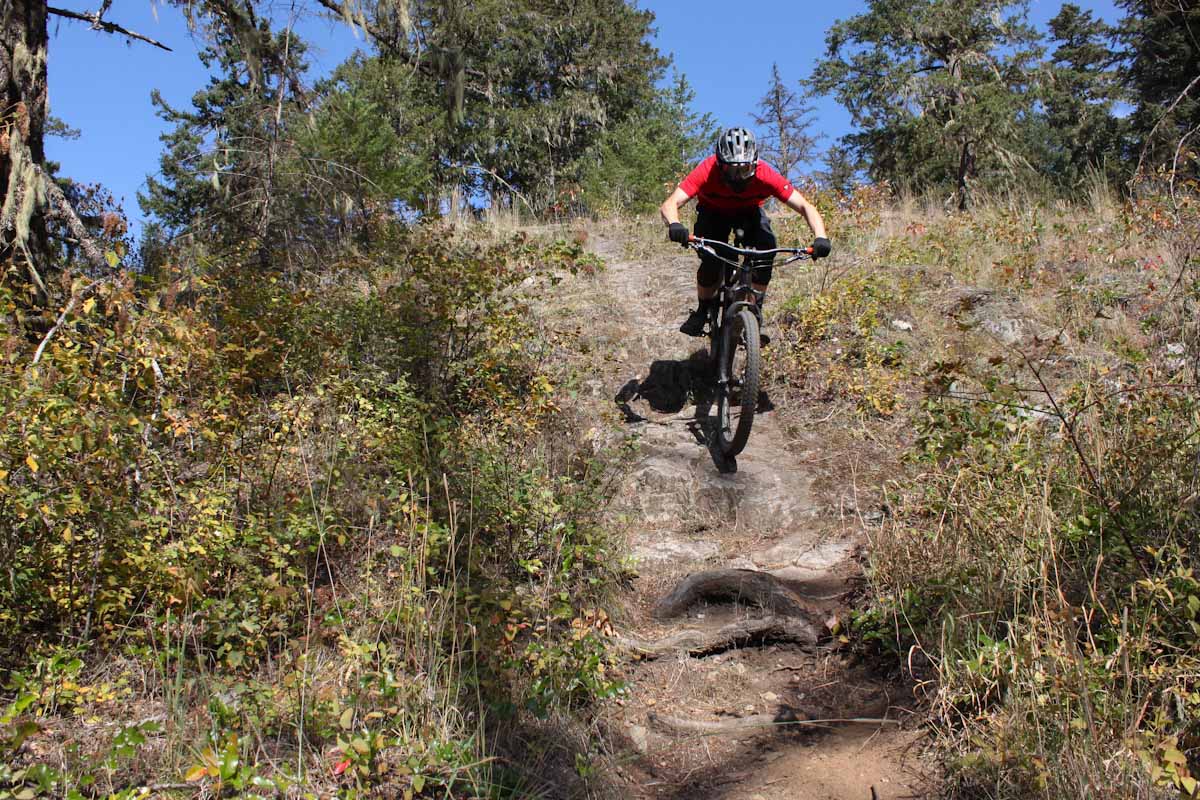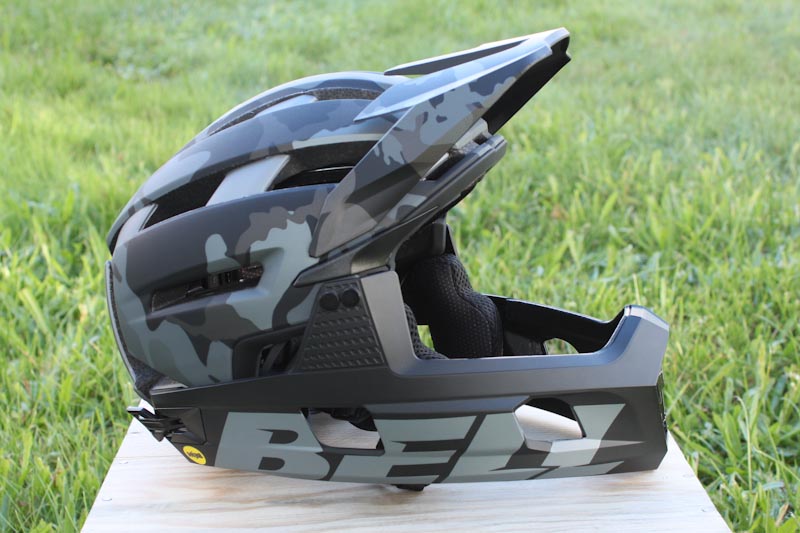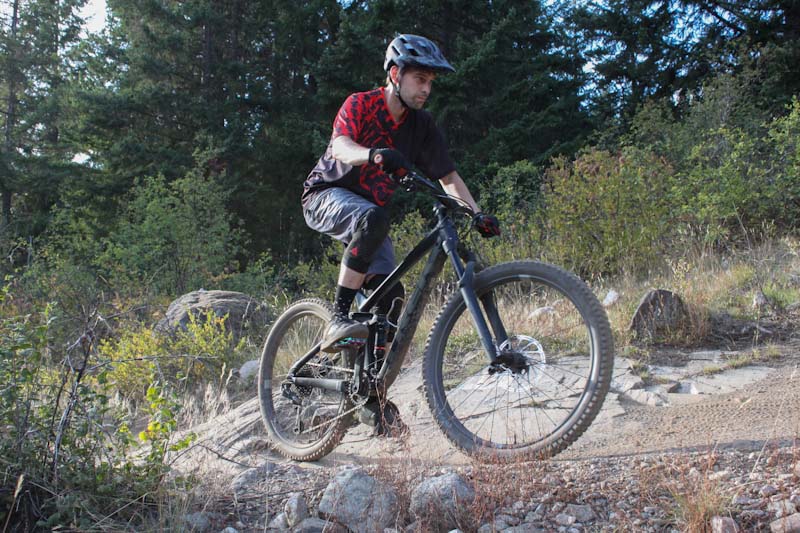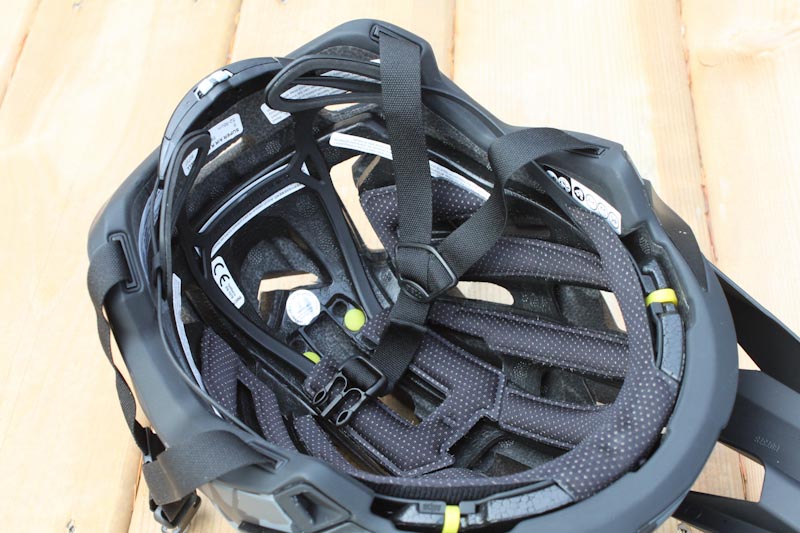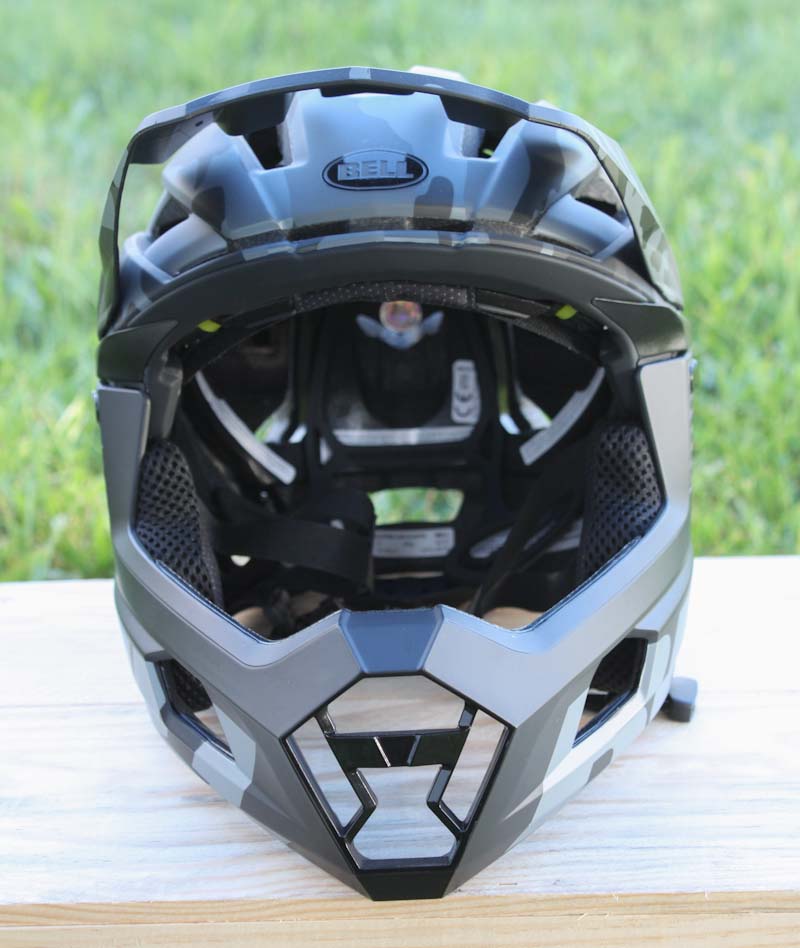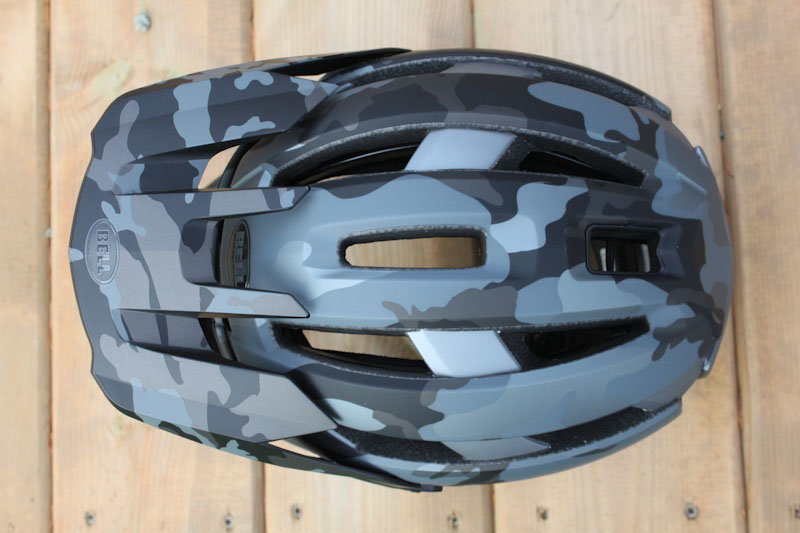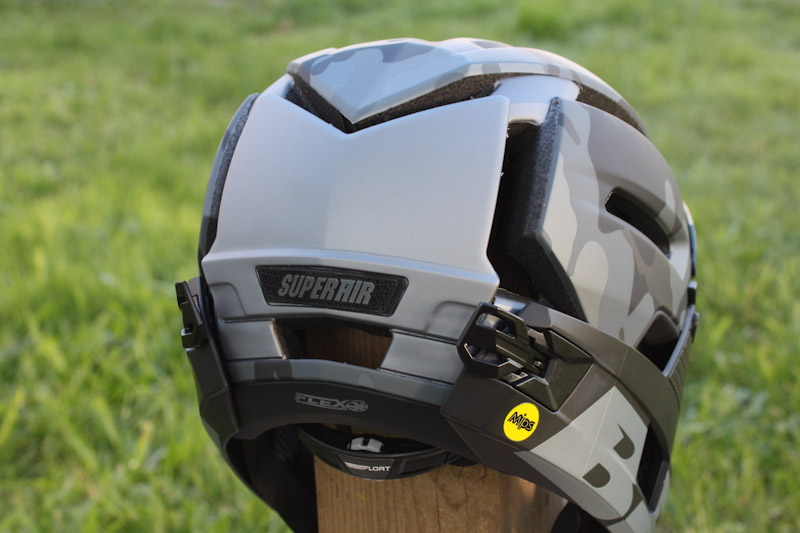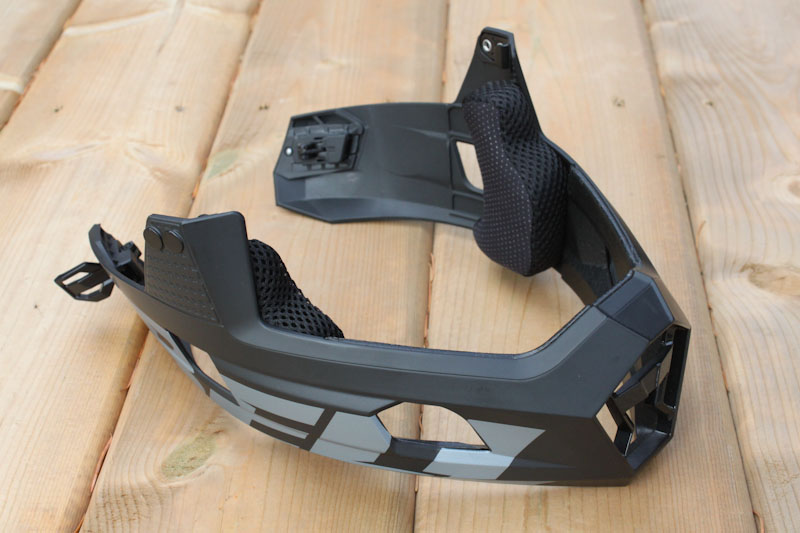This summer at Crankworx Whistler, Bell slipped a few then-unreleased Super Air R enduro helmets into the hands of MTB media, including myself. Since Crankworx I’ve been riding the Super Air R, and in this article we’ll look at how it performs in its open and full-face modes.
Bikerumor covered the Super Air R’s official launch in early September, so check out that article for the technical info and specs. Bell has struck a new middle ground with this lightweight, convertible lid; with good ventilation, Flex Spherical MIPS protection and full facial coverage, the Super Air R caters to trail/enduro riders who like to push their limits.
Fit-wise, Bell’s head form lines up almost perfectly with my skull, but their sizing makes it fit rather snugly. Thankfully the shell and retention system are just large enough for me, and it’s only the interior padding that makes the helmet fit tight. I am very prone to migraines, but Bell’s 52-56cm size small helmets have never given me a headache.
Bell’s helmets feel a bit shallow compared to some other brands, but the shell coverage is still ample for an enduro-style helmet. FYI, my head is on the shallow and narrow side, and measures 56cm’s.
Bell put a reasonable amount of padding in this helmet. The front half and top of your head are coddled with medium-thick pads, and out back the retention system’s ‘gripper pads’ are quite comfortable. The Super Air R’s dial-operated Float retention system is easy to adjust with or without gloves.
Bell kept it simple with the straps and buckles. The Super Air R uses a traditional chin buckle and slim, basic side adjusters, which are all perfectly fine by me.
The visor has three positions, and in the lowest it’s just visible in my upper peripheral vision. The highest position is meant for stashing goggles on your forehead. I had a bit of an issue fitting my Oakley goggles under the visor. I could get them to sit up there for hanging at the trailside, but there isn’t enough room for them to stay put when my head was shaking around. As you can see in the photo, my visor also came right out of the box bent!
The Super Air R’s ventilation is excellent. I could feel plenty of air blowing over my skull, even at low speeds. I did notice the generous interior padding will make your head sweat, but not enough to discount what the vents do for you. In open-face mode the Super Air R isn’t the lightest option at 402g (if you compare it to helmets without chin bars), but thanks to its solid fit I didn’t notice the extra grams.
Adding the chin bar to the Super Air R is pretty easy. Just line up the two front clips, then clamp in the rear buckles and you’re full-faced. Removing it is even easier; simply reach back, flip the buckles forward, then pull the chin bar forward and it pops right off. In full-face mode, my goggles fit into the Super Air R no problem.
The Super Air R’s chin bar is fairly compact – I couldn’t even see it below the frame of my goggles, so I doubt anyone will find it visually distracting. Luckily, the chin bar sits just far enough from my face that I can squeeze my hydration pack’s hose behind it to get a drink.
Adding the chin bar to the helmet doesn’t make it much warmer to wear at all. The small side pads only touch my upper cheeks, and air flows freely through the front and side vents. With the bar on, the overall weight of the helmet is impressive. Bell claims a size Small weighs 590g, but my scale showed it at 630g, which is still very light. Remember, this chin bar isn’t DH-rated, but I’m sure it’ll save you some damage if you crash face-first.
Bell’s Super Air R lives up to its name with great ventilation in either open or full-face modes, and for the level of protection it provides it is very lightweight. If you’re pushing it hard on the trails or racing enduro, I’d definitely recommend trying one on. The Super Air R retails for $275. Seven different paint schemes are available, in S/M/L sizes.
